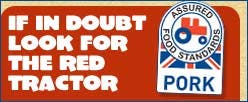USMEF Report Identifies EU Pork Opportunities
Published: Sep 30, 2011
Pork industry animal welfare standards scheduled to take effect in the European Union on Jan. 1, 2013, could increase opportunities for U.S. pork exports, according to a report released by the U.S. Meat Export Federation (USMEF) based on interviews with more than 30 EU importers, retailers and further processors.

The new animal welfare regulations will require EU farmers to keep pregnant sows in loose housing systems rather than in confinement stalls. While the regulation has been applauded by many in the EU pork industry, and compliance is recognized in “welfare labeling” on pork products, the price of compliance with the regulations is reportedly proving challenging for many EU farmers, according to USMEF’s report, which was funded by the USDA Market Access Program (MAP) and the Pork Checkoff.
Based on the responses from those in the EU pork industry, the rising costs for compliance with the animal welfare regulations are expected to lead to a decline in EU pork production of anywhere from 3 percent to 7 percent by 2013, creating opportunities for pork imports, notably from the United States. Factors that could affect this are the compliance rate of the EU industry with the regulations and the timing of implementation.
“There is no question that there could be a gap between EU pork production and demand,” said Dan Halstrom, USMEF senior vice president of global marketing and communication. “The question remains whether the larger opportunity will be in the EU or in those export markets now served by the EU that could feel the squeeze as pork is held back to serve EU customers.”
According to the report, EU pork farmers have been losing money every year since 2007, with the high price of feed being a key factor. EU banks reportedly are hesitant to lend farmers the money required to comply with the new animal welfare regulations based on projections for another money-losing year in 2011.
Halstrom noted that while the EU may be a niche market for U.S. pork, USMEF has identified companies that have an interest in selling it based either on past experience or their desire to diversify supply channels.
One of the biggest variables in how successful the welfare standards will be is the reaction of EU consumers. In the United Kingdom, for example, the four largest supermarkets reportedly are expected to limit pork sales to those EU countries that “fully comply” with the 2013 welfare requirements. That said, the UK also is known as a value market, and UK consumers are not expected to continue to pay high prices for pork at large supermarket chains when there are alternative sources more competitively priced. Thus, even if the higher costs of compliance do not affect the supply of EU pork, the higher price of the final product could drive some consumers – and importers – to seek out pork from the U.S. or other sources.
Through the first seven months of 2011, the EU has imported 17.6 million kilograms (38.7 million pounds) of pork valued at $47.6 million, decreases of 21.4 percent in volume and 9.4 percent in value versus 2010, according to the Global Trade Atlas. Chile, Switzerland and the United States are the top exporters of pork to the EU-27 this year.
Those interested in learning more about the report on pork export opportunities to the EU should contact Halstrom at dhalstrom@usmef.org or Jim Herlihy at jherlihy@usmef.org.
